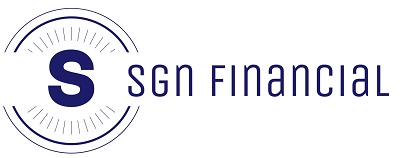When it comes to investing in real estate, equity is a key concept to wrap your head around. The Successful Investor’s Michael Sloan explains what equity is, and how you can use it to your advantage.
What is equity?
Equity is the difference between the current value of your home and how much you owe on it.
For example, if your home is worth $400,000 and you still owe $220,000, your equity is $180,000.

The great thing is, you can use equity as security with the banks. This means you can borrow against your equity to fund life’s big purchases, such as:
-
extending your home
-
starting a business
-
buying a car
-
going on a holiday.
You can use also use equity to buy an investment property and get into the real estate game.
Total equity and useable equity
Banks will typically lend you 80% of the value of your home – less the debt you still owe against it. This is considered your useable equity.
Since the bank is lending you money against the value of your home, they won’t lend you the full amount. Put simply, if house prices dip, they don’t want an outstanding loan that’s worth more than your property.
Keep in mind that it’s possible to borrow more than 80% if you take out Lenders’ Mortgage Insurance (LMI).
How much could you borrow for an investment property?
Using the example above, let’s say your home is valued at $400,000 and your mortgage is $220,000. Here’s the breakdown of sums:
-
value of your property – $400,000
-
value of your property at 80% – $320,000
-
minus your mortgage – $220,000.
This means your useable equity would be $100,000.
Using the ”rule of four”
When it comes to actually buying an investment property, it can be hard to know where to start.
But a simple rule of thumb is to multiply your useable equity by four to arrive at the answer.
For example, four multiplied by $100,000 means your maximum purchase price for an investment property is $400,000.
Why four and not five?
If you’re buying an investment property worth $400,000, the bank will lend against your future property just as they would against your existing home.
The banks will lend 80% (or $320,000) in this scenario, but the property costs $400,000. This leaves an $80,000 gap, which is your house deposit.
However, you also have to budget for purchase costs such as stamp duty, legal fees and more. This is approximately 5% of the purchase price – around $20,000 on a $400,000 property.
Therefore, the total amount of funds needed to purchase a $400,000 investment property is now $100,000 – an $80,000 deposit plus $20,000 costs.
Final tips
Even if you have plenty of equity, it’s not always a given that you can borrow against it. The bank will consider several factors including:
-
your income
-
your age
-
how many kids you have
-
any additional debts
Remember to play it safe. If you don’t have any funds outside your home equity, then it’s risky to use every cent of your usable equity to invest in property.
You always need a buffer – back up funds in case things don’t go to plan. Even if it means you can’t invest for a while, it’s important to keep yourself protected.
Ultimately, using equity to buy an investment property can be a smart move. But before you get serious, it’s best to talk to your banker or broker.
Before you decide which strategy is best for you, talk to us on +61 3 9968 0888.
Source: NAB
Reproduced with permission of National Australia Bank (‘NAB’). This article was originally published at https://www.nab.com.au/personal/life-moments/home-property/invest-property/equity-to-invest
National Australia Bank Limited. ABN 12 004 044 937 AFSL and Australian Credit Licence 230686. The information contained in this article is intended to be of a general nature only. Any advice contained in this article has been prepared without taking into account your objectives, financial situation or needs. Before acting on any advice on this website, NAB recommends that you consider whether it is appropriate for your circumstances.
© 2022 National Australia Bank Limited (“NAB”). All rights reserved.
Important:
Any information provided by the author detailed above is separate and external to our business and our Licensee. Neither our business nor our Licensee takes any responsibility for any action or any service provided by the author. Any links have been provided with permission for information purposes only and will take you to external websites, which are not connected to our company in any way. Note: Our company does not endorse and is not responsible for the accuracy of the contents/information contained within the linked site(s) accessible from this page.
